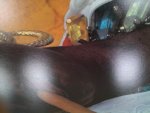Hello everyone!
We have had our FujiFilm Acuity Advanced for over a year and have tried numerous times to reduce banding in our prints.
I have read some other posts saying to try unidirectional printing and it does reduce the banding but not much. The downside is that it takes longer to print and it doesn't get rid of the banding.
Is this just something we will have to live with or can the issue be cured? I have attached an image if our banding issue. Any advice would be appreciated!
We have had our FujiFilm Acuity Advanced for over a year and have tried numerous times to reduce banding in our prints.
I have read some other posts saying to try unidirectional printing and it does reduce the banding but not much. The downside is that it takes longer to print and it doesn't get rid of the banding.
Is this just something we will have to live with or can the issue be cured? I have attached an image if our banding issue. Any advice would be appreciated!












